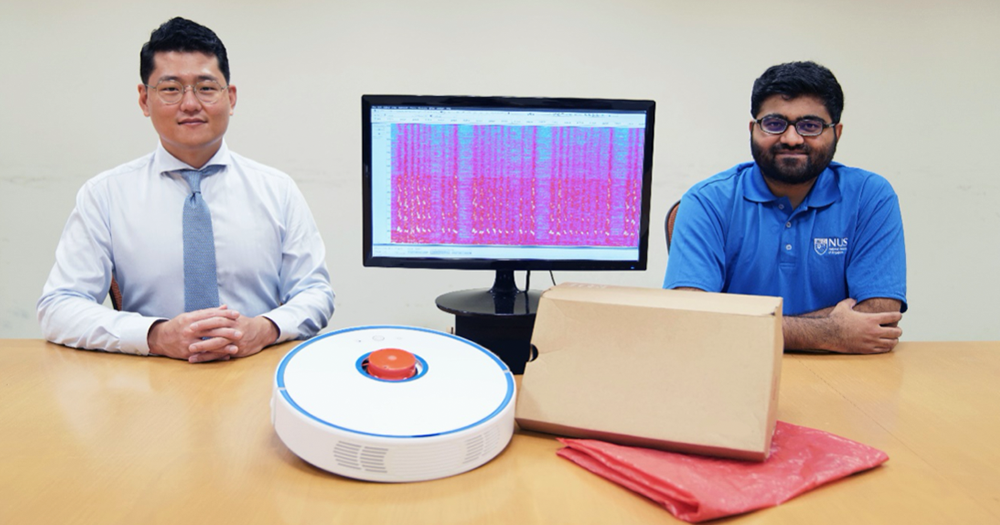[Editor's note, Dec. 8, 12:33pm: A previous version of this article incorrectly stated that the Lidar sensor of the robot vacuum cleaner was replaced with a laser-based microphone. This is incorrect as the team had repurposed the sensor into the laser-based microphone, not replace it. We have since amended our article to reflect this change.]
Computer scientists from the National University of Singapore (NUS) have shown how a common robot vacuum cleaner could potentially record sensitive audio data, according to a press release by the university on Dec. 7.
Robot vacuum modified with laser-based microphone
A research team lead by Assistant Professor Jun Han and his doctoral student Sriram Sami demonstrated how that could be done.
For most of us who don't have one, these robot vacuum cleaners come with a Light Detection and Ranging sensor, or Lidar.
This helps them navigate around the home and avoid common obstacles, like chairs and dustbins.
The team proceeded to repurpose the Lidar sensor with a laser-based microphone.
While it can't directly record audio, the cleaner can obtain information about what sounds were made.
This is done by reflecting lasers off common objects such as a dustbin or takeaway bag located near a speaker or TV soundbar.
Sensitive information can be recovered
Data about the sound that makes these surfaces vibrate is then recorded.
While that alone doesn't tell much, tools such as applied signal processing and deep learning algorithm, speech could be recovered from audio data.
The team collected more than 19 hours of recorded audio files and passed them through deep learning algorithms.
Spoken numbers and digits could be recovered with an accuracy rate of 91 per cent, and music clips could be classified with an accuracy rate of 90 per cent.
This could mean that a modified robot vacuum cleaner could potentially eavesdrop on credit card or bank account numbers, or even disclose what your viewing preferences or political orientation are, NUS said.
Glossy polypropylene bags (certain reusable shopping bags) were the best at reflecting laser beams by the robot vacuum cleaner, and glossy cardboard (phone boxes, shoe boxes, and certain parcels, for example) were the worst.
The team will work to apply these findings on things like active laser sensors found on the latest smartphones, and on autonomous vehicles which also use Lidar sensors.
NUS said that could possibly be misused to eavesdrop on conversations happening in nearby cars, simply via the vibrations from windows.
We deliver more stories to you on LinkedIn
Top image via NUS
If you like what you read, follow us on Facebook, Instagram, Twitter and Telegram to get the latest updates.
